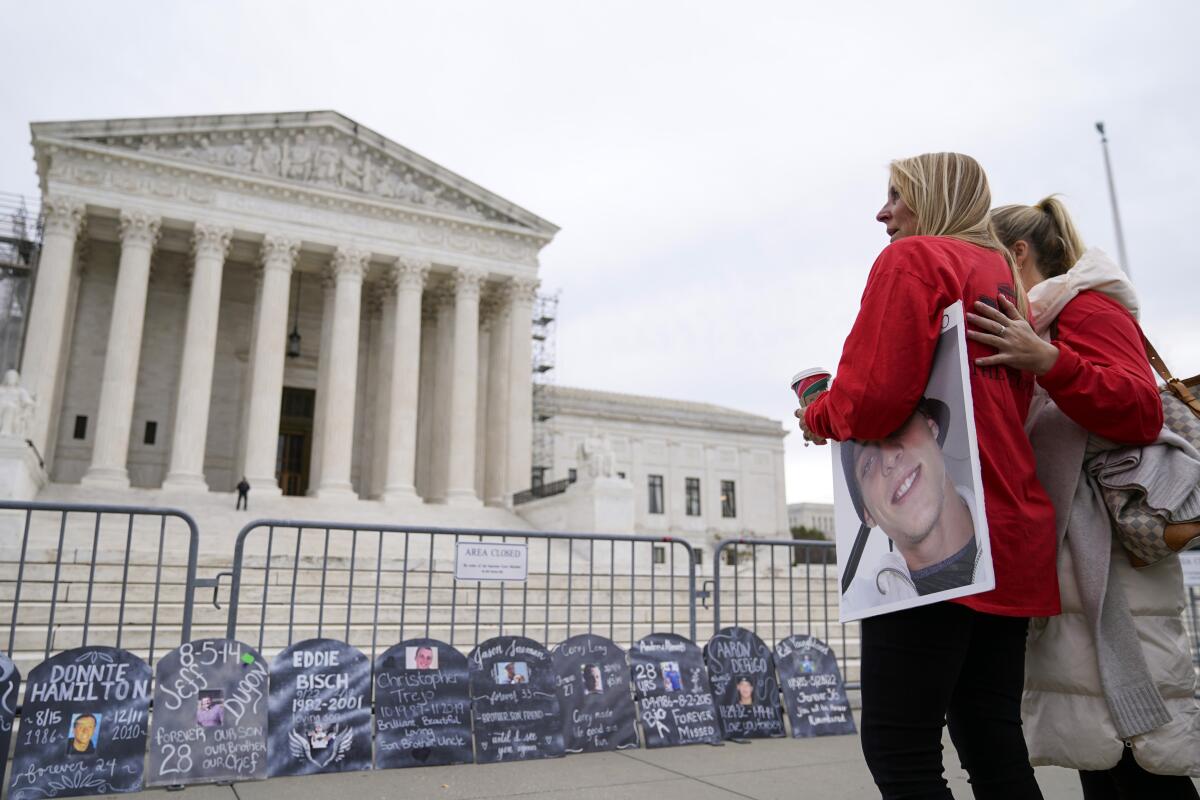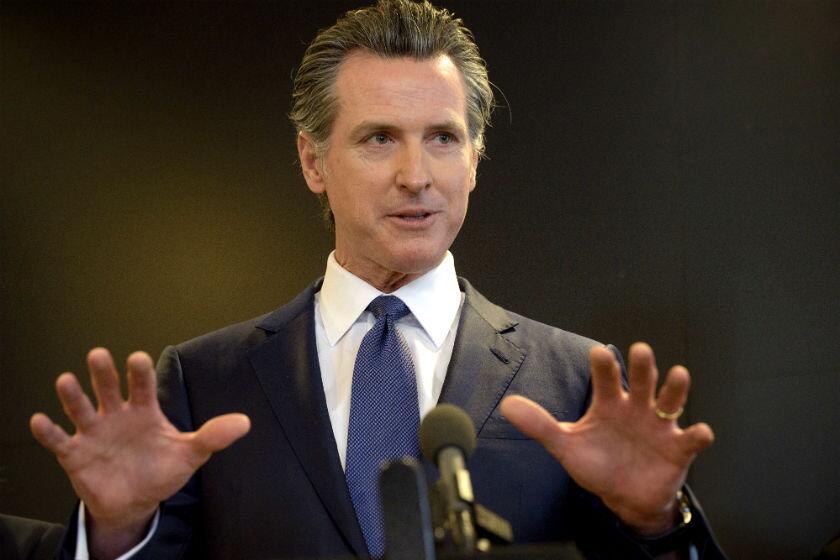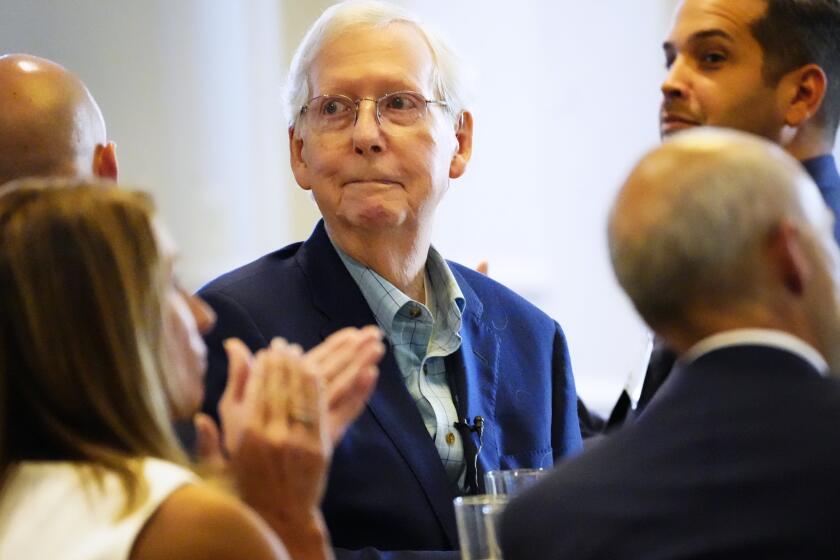Column: Is one $6-billion payout enough punishment for the family that brought us the opioid crisis?

On Monday, the Supreme Court heard arguments in the complex bankruptcy case of Purdue Pharma, whose owners, the Sackler family, have become synonymous with the carnage wreaked on American families by the profligate and dishonest marketing and distribution of OxyContin and other opioids.
In exchange for giving up ownership of Purdue and paying up to $6 billion over the next 18 years that would be used to address the crisis they helped cause, the Sacklers, understandably but shamelessly, want to be shielded against any other civil lawsuits from victims who are not parties to the current litigation. Most of the victims who are part of the settlement — state governments, Native American tribes and individuals — agreed to the terms.
But should it be legal to grant the Sacklers protection from future lawsuits?
The U.S. Trustee Program, an arm of the Justice Department that oversees the administration of bankruptcy cases, argues that it is not.
Why should the Sacklers, who personally have not declared bankruptcy, be entitled to the protections that bankruptcy offers? And why should potential victims who are not part of the mega-settlement be prohibited from filing lawsuits in the future?
One argument in the Sacklers’ favor: Failing to immunize the family will tank the settlement, dismantling years of complex negotiations and depriving victims and their families of agreed upon and timely compensation. (Which, by the way, is not particularly handsome, ranging from about $3,500 to $48,000, the highest sums to be paid out over 10 years.)
The FDA just made access to Narcan easier to stop overdose deaths. Methadone also should be made more widely available to treat addiction.
The U.S. trustee argues that individual victims going forward might be able to negotiate a better deal.
“Forget a better deal. There is no other deal,” said Washington lawyer Pratik Shah, who represents a number of plaintiffs in the case, including states, tribes, hospitals and individuals.
During oral arguments, the Supremes seemed torn but leaning toward approving the settlement.
Whatever the court decides, this case should bury once and for all the lie that drug misuse and addiction stem only from bad personal choices.
The American people were victimized by a family of heedless billionaires who lied and cheated to get their product, up to twice as powerful as morphine, into our bloodstreams for profit.
When towns lose bowling alleys or movie theaters or libraries, they lose a safety net in the battle against addiction.
It’s important to remember how the opioid crisis began. Then you can decide whether the branch of the Sackler family responsible for most of it deserves to be protected from further potential punishment.
In 1995, the Food and Drug Administration approved OxyContin, a time-release version of the painkiller oxycodone. Incredibly, the agency allowed Purdue to claim that because it was a long-acting drug, it was safer and less likely to be abused than rival painkillers such as Percocet and Vicodin. Was this claim based on findings from clinical trials? Nope. It was based on the nonsensical theory that drug abusers would prefer the quicker-hit high of fast-acting narcotics.
“If you look at the prescribing trends for all the different opioids, it’s in 1996 that prescribing really takes off,” Andrew Kolodny, co-director of the Opioid Policy Research Collaborative, at Brandeis University, told the New Yorker in 2017. “It’s not a coincidence. That was the year Purdue launched a multifaceted campaign that misinformed the medical community about the risks.”
In a 2007 plea deal with the government, Purdue admitted that it trained its sales representatives to tell doctors that Oxy was less addictive and less prone to abuse than its competitors, which we now know to be lies.
Internal documents that came to light in the Justice Department’s investigation showed that the company knew as early as 1999 that OxyContin users were exchanging tips on how to crush and snort the pills for a faster high, and that some doctors were being charged with selling prescriptions.
Metro workers watch and wait as drug overdoses unfold -- or go rogue to save lives. One has revived 21 riders.
One familiar plot point here for anyone who has read the many excellent books about Purdue and the opioid crisis or watched their screen adaptations (including the critically acclaimed Hulu mini-series “Dopesick” and the current Netflix series “Painkiller”) revolves around Curtis Wright, the FDA examiner who approved Purdue’s package insert asserting the drug’s safety. Wright claimed he was approached by Purdue for a job after leaving the FDA. But in 2015, Richard Sackler, former president and chairman of Purdue Pharma, testified that Wright asked the company to hire him before he left the FDA. For appearance’s sake, Purdue thought it best to wait a couple of years before bringing Wright on at more than double his government salary.
In November, during an interview with a local New Hampshire TV station where he lives, Wright said, “It is a difficult, terrible situation, and I am so sorry for the people who are hurt and for the patients who can’t get good pain relief now.”
So why, exactly, can’t those people get good pain relief anymore?
After Purdue and other drug manufacturers flooded the country with opioids in the 2000s, sparking a dramatic rise in overdose deaths (and oh by the way, turning the Sacklers into multibillionaires), alarmed states passed laws limiting the prescribing and dispensing of the pain pills.
And with doctors dramatically reducing the opioid prescriptions they wrote, addicted users turned to street drugs such as heroin and, when heroin became scarce, to the much more dangerous fentanyl, which is manufactured illegally in Mexico with precursor materials from China and India, then smuggled into the U.S., generally through official ports of entry.
Gov. Gavin Newsom wants to target dealers trafficking in xylazine, a sedative only authorized for veterinary use, but frequently mixed with fentanyl and detected in overdose deaths.
It’s fair to say that in recent years, the American street drug supply has essentially been poisoned by OxyContin’s illicit grandchild, fentanyl. In 1999, the Centers for Disease Control and Prevention says, 3,442 Americans died of opioid-involved overdose deaths. In 2021, the number had soared to 80,411. More than 70,000 involved synthetic opioids, mostly fentanyl.
And so, what about Purdue and the Sacklers?
Purdue is to become a public trust, overseen by an independent board that would steer the company’s profits to addressing the crisis it helped cause.
If the Supreme Court approves the bankruptcy plan, the Sacklers will be out the $6 billion they’ve agreed to, but by any standards, they will remain fabulously rich. Their infamous name will be erased from dozens of cultural and medical institutions in the U.S. and the U.K., a good thing.
But not one of them will serve a single day in prison or otherwise be much discomfited for the death and social destruction they have wreaked on this country.
A cure for the common opinion
Get thought-provoking perspectives with our weekly newsletter.
You may occasionally receive promotional content from the Los Angeles Times.









